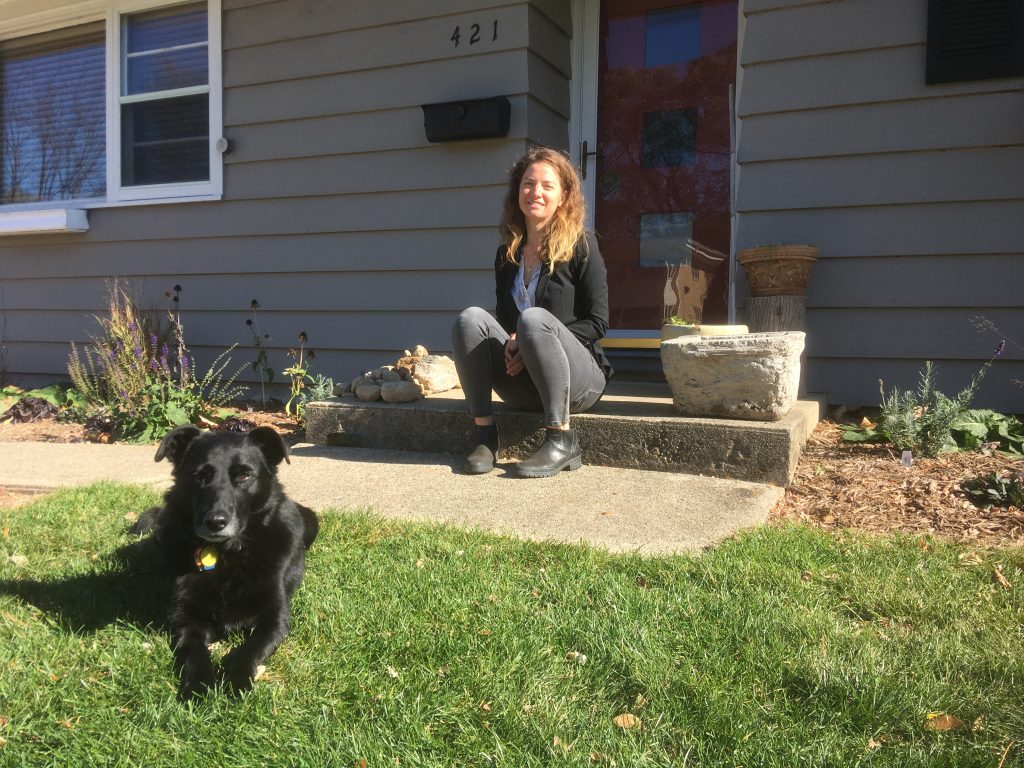Portions of this post were previously shared in Madison Mennonite’s March 2022 newsletter.
Maggie, 2021
It’s been two months now since Maggie died following a sudden-to-us decline from cancer. Her death was a hard blow, partly due to our feelings about how the end “happened” but also simply because of how integral she was to our lives and household.
In recent years, I have found my attitudes and beliefs about other-than-human animals shifting and softening. Growing up, my pets were relegated to living outdoors–a part of the pack but clearly inferior as well. Other animals were either sources of food or simply “wild.” We had no sense of relation to any of them; they were Other, they were Lesser.
About the time that Justin and I welcomed our first dog, Darby, into our home, the movie Up was released. The film transformed our relationship with Darby (and other dogs since), largely due to the special collars the dogs wear in the movie. No longer was Darby’s inner monologue a hidden secret—all her actions were roughly (“ruff-ly”) translatable into English (or so we liked to think). This epiphany continued when Maggie joined our household; and if anything, it just kept blossoming. Some days, a quarter of the conversation between me and Justin would be based on what Maggie was “saying.” Like the movie, it was often hilarious (to us), and I do think it tuned us in more to Maggie’s sentience and personality.
Western Christianity historically has demoted animals and other living beings as a way of promoting the primacy of humans, based, in part, on anthropocentric interpretations of the creation stories in Genesis. Yet there are strands of Christianity that resist these interpretations, for which I am grateful, such as Christian Animism, which posits that the Spirit of God imbues all things with life and connection to the Divine.
Recently, I’ve been reading through A Native American Theology by Clara Sue Kidwell, Homer Noley, and George E. Tinker who argue that in many traditional indigenous theologies, animals, along with all living things (including water, rocks, mountains, etc.) are “persons” of equal inherent value. They write,
“In American Indian cultures human beings are not so privileged in the scheme of things; neither are humans considered external to the rest of the world and its functions…We do have particular responsibilities in the created realm, but then, so do all our other relatives in the created realm: from bears and squirrels to eagles and sparrows, trees, ants, rocks, and mountains. In fact, many elders in Indian communities are quick to add that of all the createds, of all our relations, we Two-Leggeds alone seem to be confused as to our responsibility toward the whole.” (Kidwell et al, 38-39.)
Maybe the idea that our pets and all creation do speak isn’t such a crazy proposition, after all. Perhaps humans like me have unnecessarily created a linguistic divide that does not exist naturally. Putting “translation” collars on our pets might just be the best thing to do to retrain us to hear them and their stories as we humans find our proper place in the circle of “all our relations.”
As we continue to grieve Maggie’s absence, I am also trying to open myself more to the “createds.” On walks, I have begun to practice envisioning a circle of warm, peaceful light surrounding me as I approach turkeys, squirrels, robins, and the like. I extend this non-threatening intention toward them as my attempt to build connection and honor their dignity.
I have no idea if this is “working,” but it is changing me, opening me more to the immanence of the Divine in and all around me. And I’d like to think that Maggie was my guide onto this path, patiently drawing me into a deeper awareness of the Sacred Mystery and Love.

